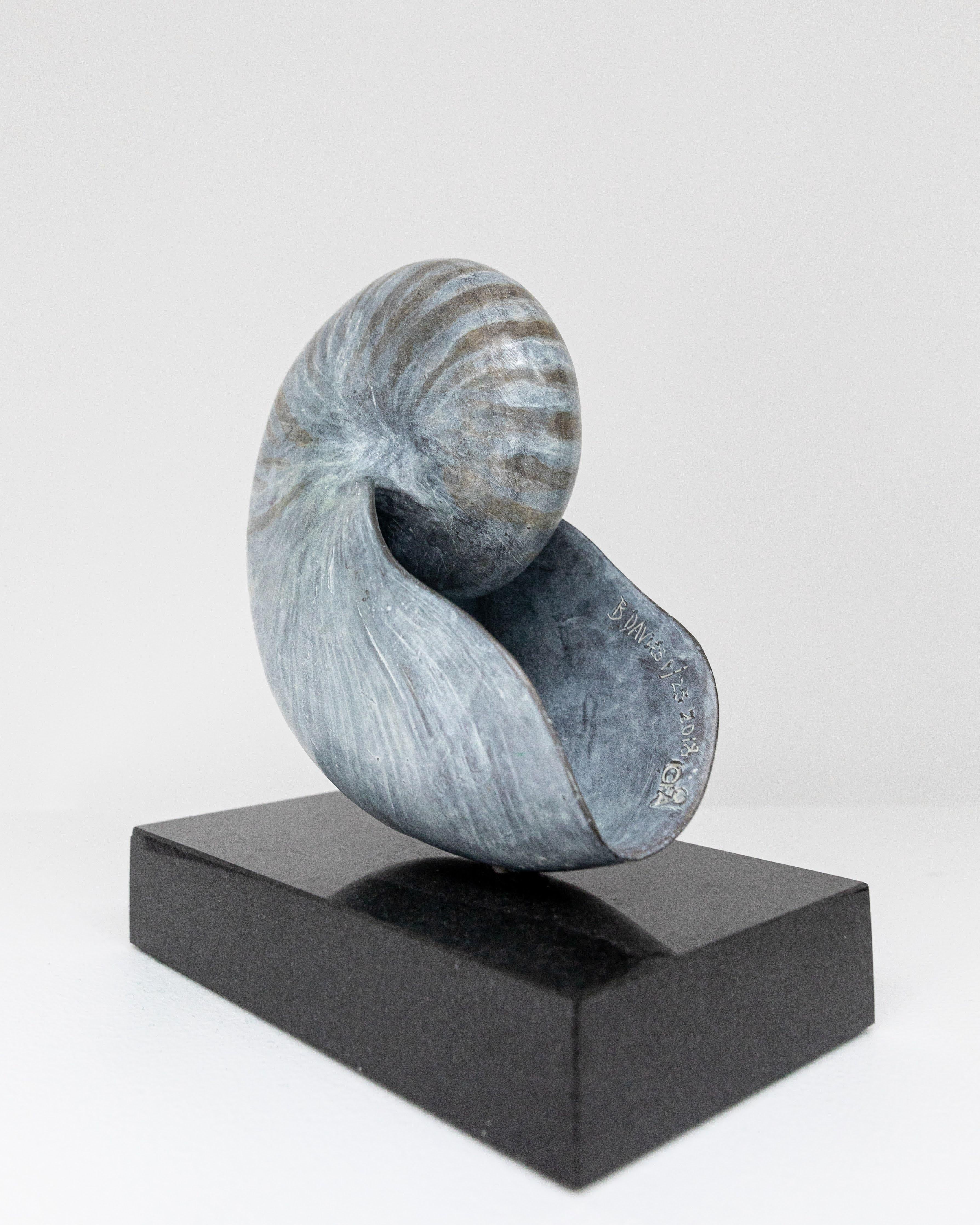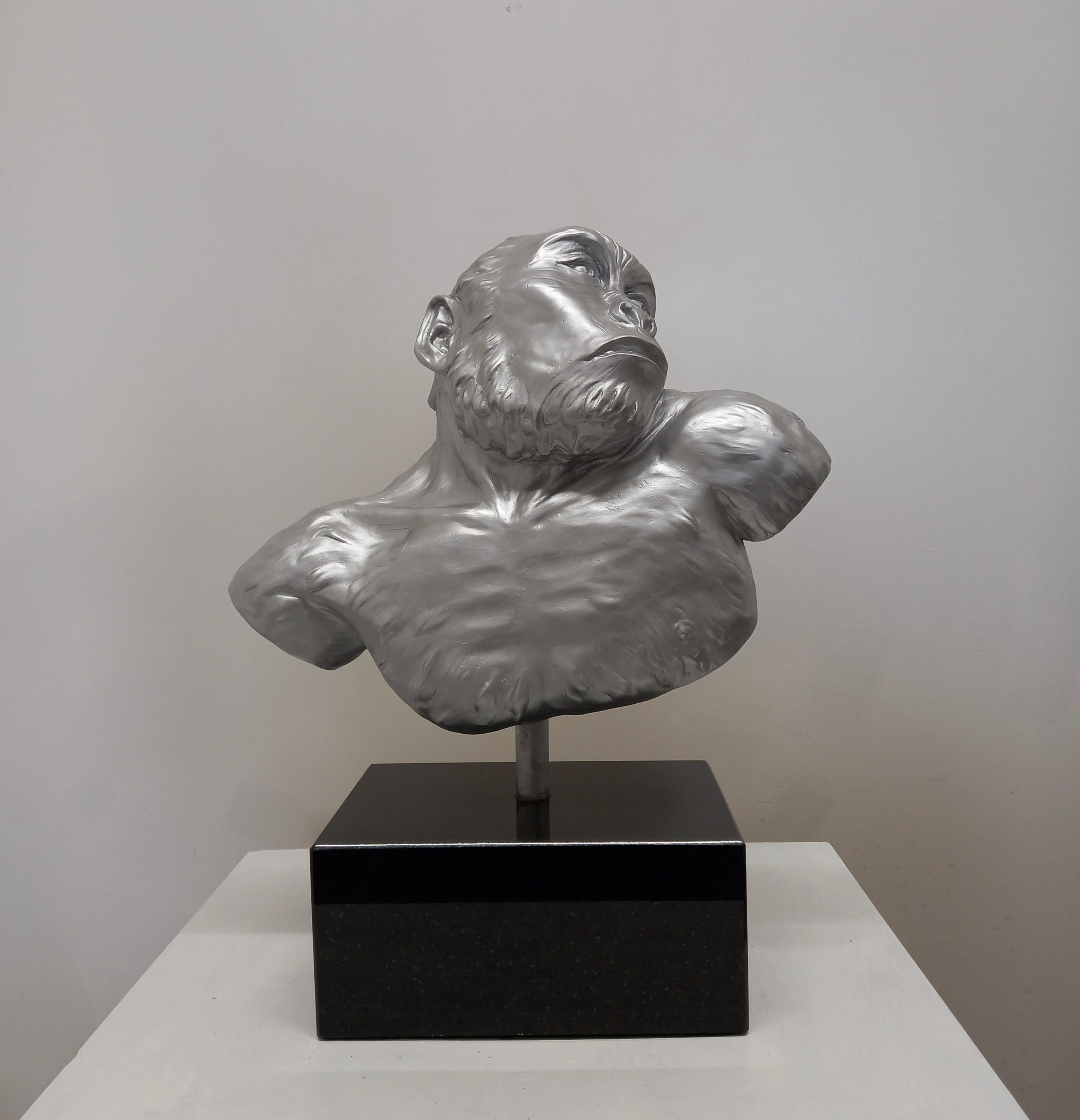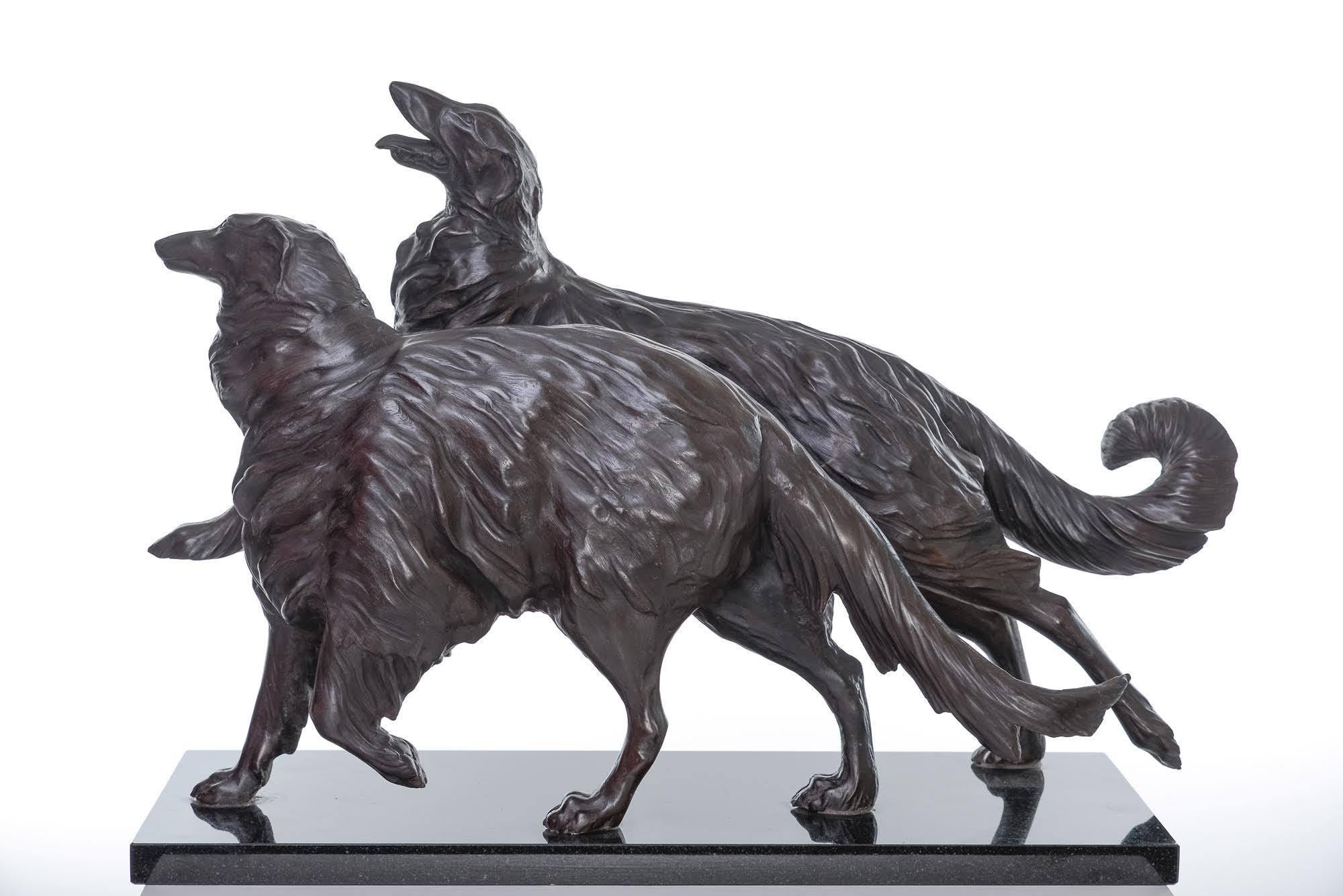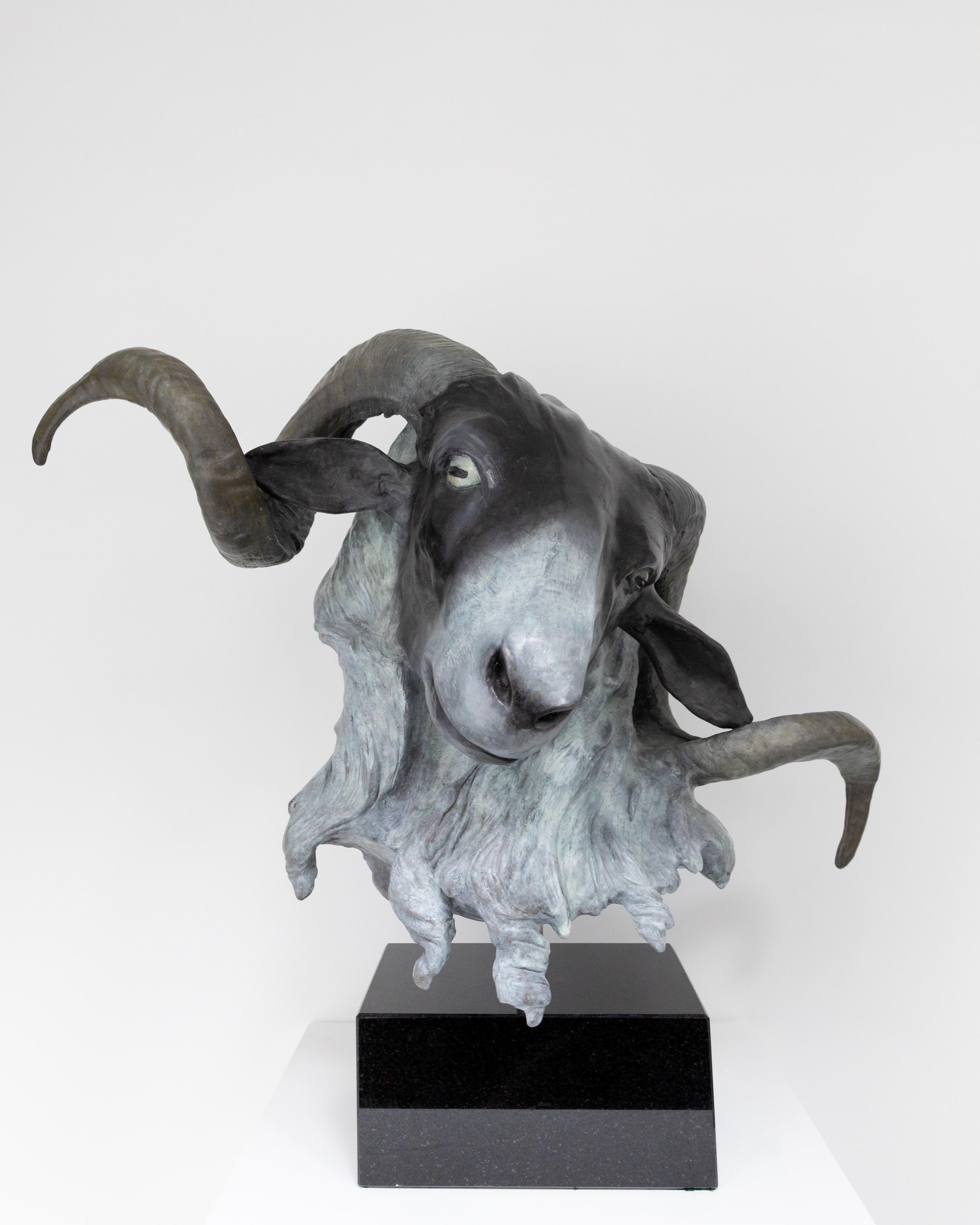Items Similar to Dog scratching its ear
Want more images or videos?
Request additional images or videos from the seller
1 of 10
Dog scratching its ear
About the Item
This amusing naturalistic sculpture in silver-plated pewter was probably made in the 17th century by Georg Schweigger. Inspired by a model created by another Nuremberg sculptor, Peter Flötner, it bears witness to the persistence during the baroque era of the naturalistic taste that emerged in the Renaissance. Intended as an ornament for some Kunstkammer, or cabinet of curiosities, this sculpture was a great success, as can be seen from the presence of similar works in many European museums.
1. Georg Schweigger
Georg Schweigger was a baroque sculptor and medal founder from Nuremberg, known mainly for his small-scale works in stone, carved wood and cast metal. His only large-scale work, the Neptune Fountain, has been in the Petershof Palace, the summer residence of the Tsars near St. Petersburg, since 1797. This monumental sculpture demonstrates his taste for the representation of movement, which we find in this small piece, inspired, as we shall see, by earlier models.
2. The success of a naturalistic theme
As is often the case in the history of art, the source of the Dog scratching his ear theme probably comes from an engraving, and more precisely from one made in Strasbourg in 1480 or in Aschaffenburg in 1481 by the Master of the Housebook, an anonymous engraver working in southern Germany at the end of the 15th century.
This engraving seems to have been Peter Flötner’s (1490 - 1546) source of inspiration. Peter Flötner was a sculptor and engraver who settled in Nuremberg in 1522. The Louvre Museum also has a gilded lead statuette dated between 1500 and 1515 (on deposit at the Musée de L'Œuvre in Strasbourg), which in turn is thought to have served as a model for other known statuettes.
This model was later taken up by the Frenchman Barthélemy Prieur (1526 - 1611), although it is not clear whether these two sculptors were directly inspired by the engraving of the Master of the Housebook or whether, as would seem more likely, Barthélemy Prieur was inspired by Peter Flötner. A sculpture attributed to Barthélemy Prieur, believed to date from the 1600s, was sold at Sotheby's Paris on 14 June 2022 for €18,270.
The later models attributed to Georg Schweigger often show variations on the Flötner one, such as the tongue hanging down or the tail raised (as in the model attributed to Barthélemy Prieur). The one presented here corresponds to the Flötner model, but the regularity of the original silver threaded fixing rods suggests that it was made after the beginning of the 17th century, and is therefore contemporary to Georg Schweigger’s activity.
The statuette of the Dog scratching his ear was a famous subject, of which several versions by different artists appear in many other museums, including the Grünes Gewölbe in Dresden, as well as the museums of Berlin (since 1701), Braunschweig, Vienna, Cleveland and Munich.
Main bibliographic elements :
U. Berger, V. Krahn, Bronzen der Renaissance und des Barock, Herzog-Anton Ulrich Museum, Braunschweig, 1994, pp.275 - 276, figs. 222 and 223.
V. Krahn, Von allen Seiten schön. Bronzen der Renaissance und des Barock, Berlin, 1996, p. 544, no. 204.
- Attributed to:Georg Schweigger (1613 - 1690, German)
- Dimensions:Height: 2.13 in (5.42 cm)Width: 2.57 in (6.53 cm)Depth: 2.57 in (6.53 cm)
- Medium:
- Movement & Style:
- Period:
- Condition:17th century silver-plated pewter sculpture (re-silvered) Height: 2 1/8” (54 mm); width: 2 9/16” (65 mm), depth: 2 9/16” (65 mm) On a black marble base ¾” x 4 ¼” x 3 13/16” (20 mm x 108 mm x 97 mm).
- Gallery Location:PARIS, FR
- Reference Number:1stDibs: LU1568210788782
About the Seller
5.0
Vetted Seller
These experienced sellers undergo a comprehensive evaluation by our team of in-house experts.
Established in 2020
1stDibs seller since 2021
8 sales on 1stDibs
Typical response time: 2 hours
- ShippingRetrieving quote...Ships From: PARIS, France
- Return PolicyA return for this item may be initiated within 3 days of delivery.
More From This SellerView All
- A set of four hard stone marquetry plaques depicting animals, Italy 18th centuryBy Antonio TempestaLocated in PARIS, FRThese four plaques represent either domestic (a horse, two rams) or exotic animals (a rhinoceros and an elephant). Made on slate slabs cut to shape (a rectangle with concave angles), they are all based on the same narrative scheme: in a frame of Egyptian porphyry, an animal in multicoloured marble is represented advancing on a green marble floor, standing out against a black slate background. These plates were made in Italy, probably in Florence or in Rome, during the 18th century. We think that their primary purpose was to decorate the drawers of a cabinet. Like many other compositions in hard stone, these plaques were inspired by engravings that were a widespread decorative repertoire in the workshops. Three of the plaques presented here were directly inspired by works by Antonio Tempesta (1555 - 1630): the Rhinoceros, the Polish Horse...Category
18th Century Italian School Figurative Sculptures
MaterialsMarble, Slate
- Laocoön and his Sons, an exceptional bronze sculpture by Giacomo ZoffoliLocated in PARIS, FRThis exceptional bronze group (unpublished), executed in Rome in the second half of the 18th century, bears witness to the fascination with the Laocoön since its discovery on January...Category
1770s Renaissance Nude Sculptures
MaterialsBronze
- Stag Hunting in the Vicinity of Nuremberg by a German Artist Peter von BemmelLocated in PARIS, FRThis small landscape shows a hunting scene: two riders are chasing a stag with their dogs at the edge of a forest. Signed by Peter von Bemmel, it is typical of the production of this...Category
1720s Old Masters Landscape Paintings
MaterialsCopper
- River Landscape with Shepherds and Architecture, a painting by Jan van BunnikBy Jan van BunnikLocated in PARIS, FRThis painting has been the subject of a study by the art historian Fabrizio Dassie (available on request), confirming its inclusion in Jan van Bunnik’s corpus. In this painting, Ja...Category
Late 17th Century Old Masters Landscape Paintings
MaterialsCopper
- Costume of an envoy of Venice, a drawing by Francesco Galimberti (1755 - 1803)Located in PARIS, FRWe thank Mrs. Bożena Anna Kowalczyk who suggested the attribution to Francesco Galimberti based on a photograph of the artwork. This engaging drawing, finely executed in black and red chalks, depicts a Venetian diplomat in his 'new clothes...Category
1780s Old Masters Portrait Drawings and Watercolors
MaterialsChalk
- Three drawings by François Boucher in a mounting by Jean-Baptiste GlomyBy François BoucherLocated in PARIS, FRWe would like to thank Juliette Parmentier-Courreau of the Custodia Foundation for her welcome and support during the consultation of Glomy’s Journal des Ouvrages. This spectacularly large "feuille de desseins ajustés" commissioned by François Boucher from Jean-Baptiste Glomy is emblematic of the painter's art and mastery of rocaille. It is also fully representative of the taste of this period in the field of decorative arts. The largest of these three drawings, placed at the bottom of the composition, is particularly interesting: dating from around 1756, it constitutes a modello (apparently unpublished) for the frontispiece of the "Catalogue des tableaux de Monsieur de Julienne"), preserved in the Morgan Library in New York. 1. François Boucher, the master of French rocaille The extraordinary career of Francois Boucher was unmatched by his contemporaries in versatility, consistency and output. For many, particularly the writers and collectors who led the revival of interest in the French rococo during the last century, his sensuous beauties and plump cupids represent the French eighteenth century at its most typical. His facility with the brush, even when betraying the occasional superficiality of his art, enabled him to master every aspect of painting – history and mythology, portraiture, landscape, ordinary life and, as part of larger compositions, even still life. He had been trained as an engraver, and the skills of a draftsman, which he imbued in the studio of Jean-Francois Cars (1661 – 1738), stood him in good stead throughout his career; his delightful drawings are one of the most sought-after aspects of his oeuvre. As a student of Francois Lemoyne (1688 - 1737), he mastered the art of composition. The four years he spent in Italy, from 1727-1731, educated him in the works of the masters, classics and history, that his modest upbringing had denied him. On his return to Paris in 1734, he gained full membership of the Royal Academy of Painting and Sculpture with his splendid Rinaldo and Armida (Paris, Musée du Louvre). Although, throughout his career, he occasionally painted subjects taken from the Bible, and would always have considered himself first as a history painter, his own repertoire of heroines, seductresses, flirtatious peasant girls and erotic beauties was better suited to a lighter, more decorative subject matter. His mastery of technique and composition enabled him to move from large scale tapestry...Category
1750s Old Masters Figurative Drawings and Watercolors
MaterialsChalk, Ink
You May Also Like
- Equisetum - Mineral and vegetal green nuances on marbleLocated in Milan, ITJessica Carroll is an Italo- American sculptor (b. 1961), member of an artistic family (her father was a painter, her mother a writer and her grandfather directed the movie Totò, Pep...Category
2010s Naturalistic Figurative Sculptures
MaterialsMarble
- 'Stalking Fox' a Limited Edition Sterling Silver Sculpture by HancocksLocated in London, GBA fine sculpture of a stalking fox finely modelled in sterling silver. Weight of silver 622 gramsCategory
Early 2000s Naturalistic Figurative Sculptures
MaterialsSilver
- NautilusLocated in Oswestry, GBThe Nautilus shell is an excellent example of mathematics inherent within lifeforms of the natural world. As Davies consistently uses the 'golden ratio' (1:1.618) to proportion his work, he thought it important to exemplify this in his subject matter. The Fibonacci sequence (where each number is the sum of the two preceding numbers) and the logarithmic spiral are also inherent here. The bronze shell is mounted on a black granite base in a way that creates an optical illusion suggesting it is levitating above the base. This bronze Nautilus...Category
2010s Naturalistic Figurative Sculptures
MaterialsGranite, Bronze
- Paranthropus RobustusLocated in Oswestry, GBParanthropus Robustus. An early man (hominid), one of the Australopiths from the subepochs of the early to middle Pleistocene period 2.6 - 1.5 million years ago. Some distinctive fea...Category
15th Century and Earlier Naturalistic Figurative Sculptures
MaterialsGranite, Bronze
- BorzoisLocated in Oswestry, GBBorzois or Russian wolfhounds originated in the 17th century and were bred and prized by the Russian aristocracy for their elegance and beauty. Davies has depicted this pair exhibiti...Category
2010s Naturalistic Figurative Sculptures
MaterialsGranite, Bronze
- Scottish Blackface Ram (Ovis Aries)Located in Oswestry, GBThis portrait bust of a Scottish blackface ram that occupies an active use of space, is the ideal subject matter for a dynamic, bold yet serene bronze sculpture. The ram's magnificen...Category
21st Century and Contemporary Naturalistic Figurative Sculptures
MaterialsGranite, Bronze





